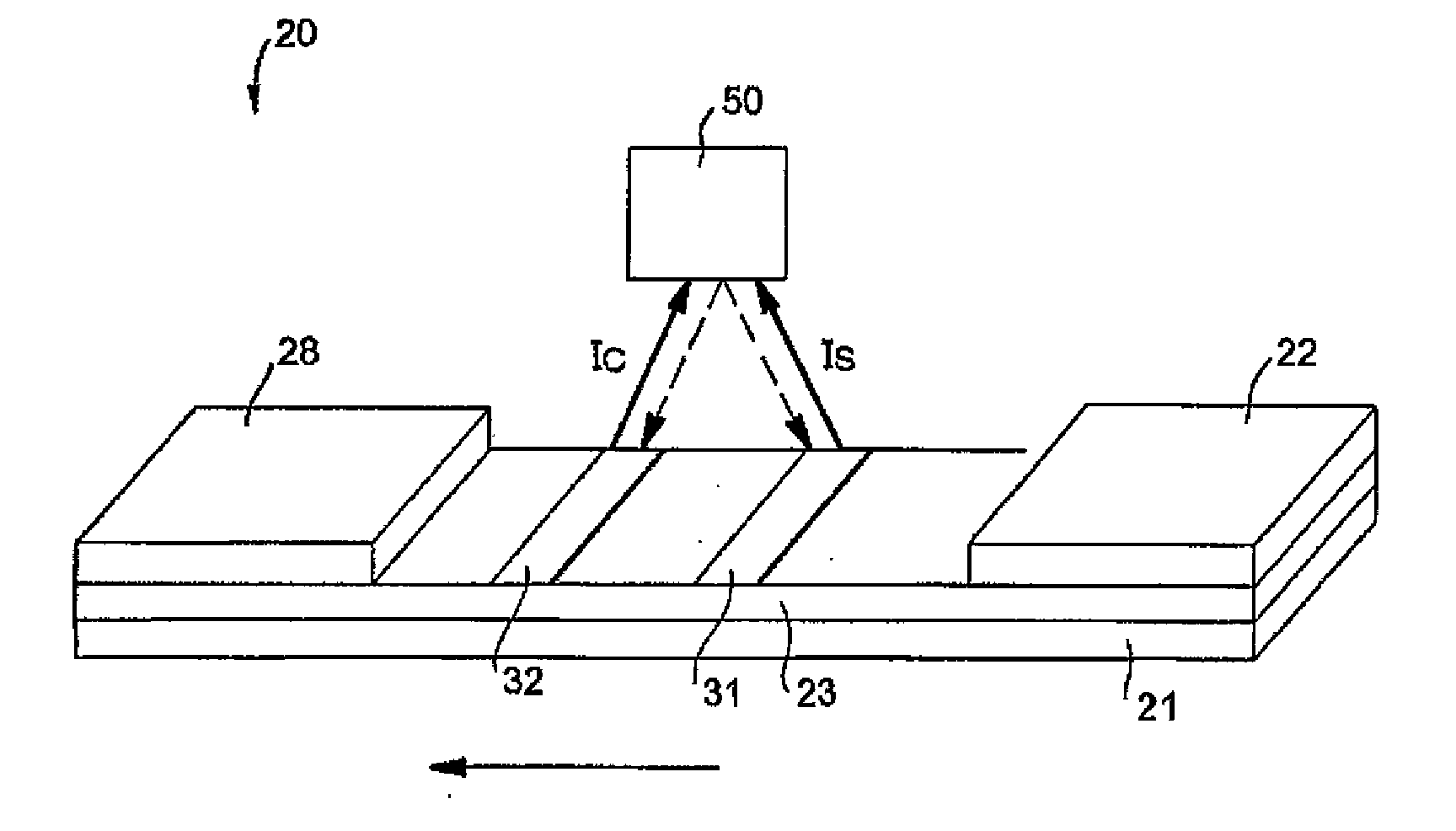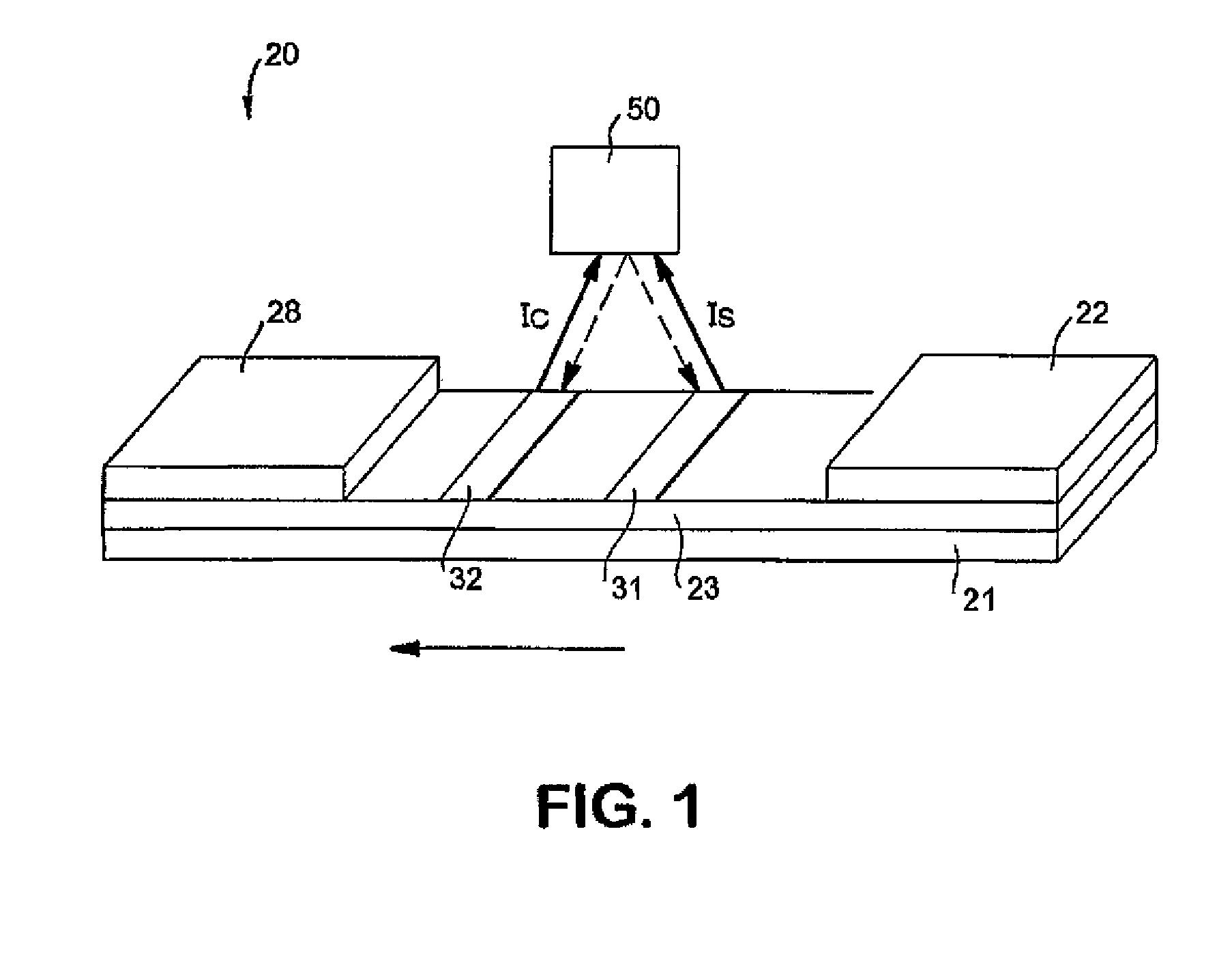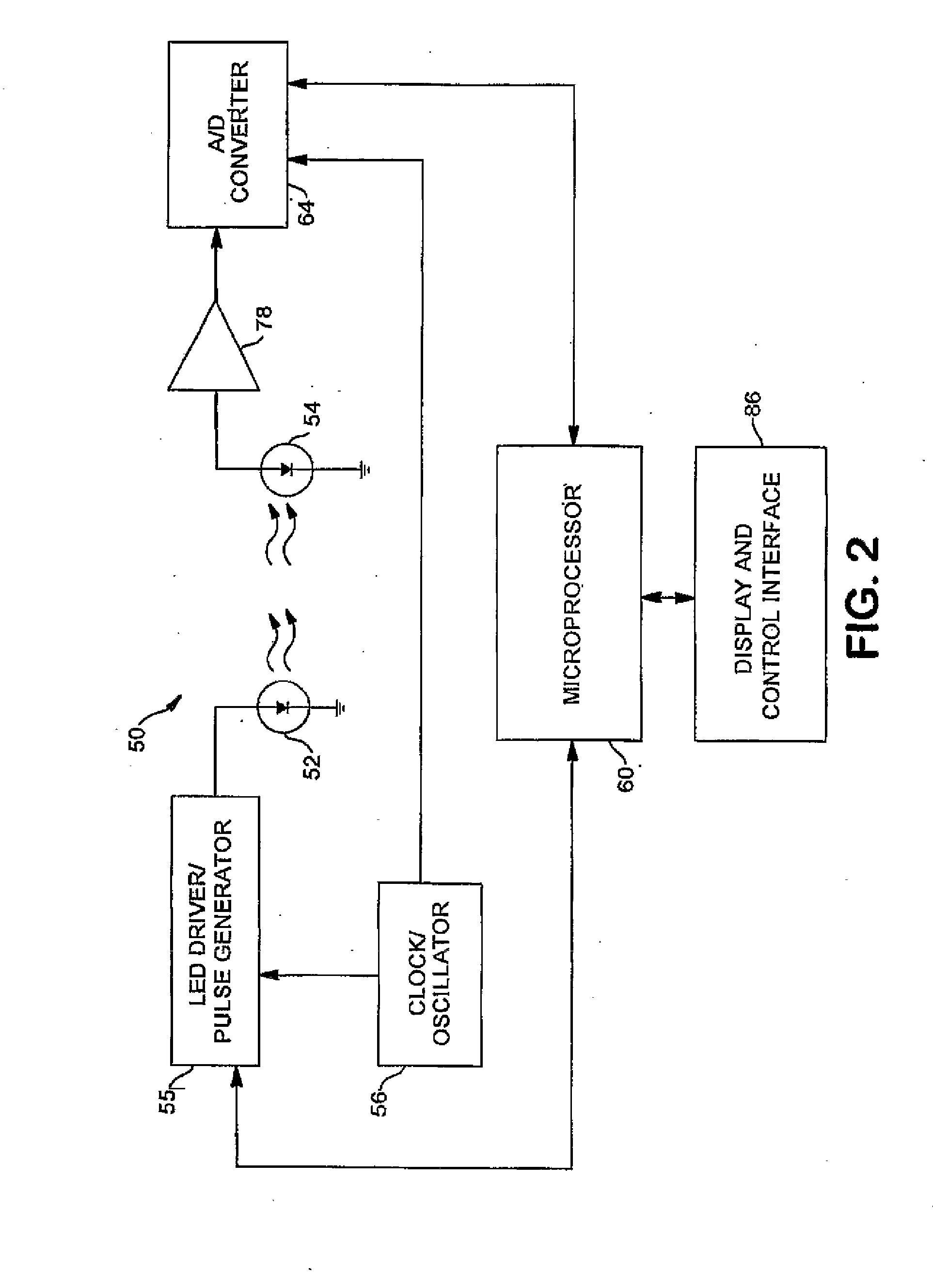Membrane-Based Assay Devices that Utilize Time-Resolved Fluorescence
a technology of membrane-based assay and time-resolved fluorescence, which is applied in the direction of fluorescence/phosphorescence, analysis by material excitation, instruments, etc., can solve the problems of reducing detection accuracy, unable to integrate time-resolved techniques in other types, and exist with conventional fluorescent detection techniques, etc., to achieve accurate excitation labels
- Summary
- Abstract
- Description
- Claims
- Application Information
AI Technical Summary
Benefits of technology
Problems solved by technology
Method used
Image
Examples
example 1
[0075]The ability to form conjugated fluorescent probe particles for use in a membrane-based device was demonstrated. 500 microliters of 0.5% carboxylated europium chelate encapsulated particles (0.20 microns, EU-P particles, obtained from Molecular Probes, Inc.) were washed with 100 microliters of a PBS buffer (0.1 molar). 40 microliters of the washed particles were then applied with 3 milligrams of carbodiimide (from Polysciences, Inc.). The mixture was allowed to react at room temperature (RT) for 30 minutes on a shaker. The activated particles were then washed twice with a borate buffer through centrifugation. The activated particles were again re-suspended in 200 microliters of a borate buffer through a 2-minute bath sonication.
[0076]Thereafter, 30 microliters of C-reactive protein (CRP) (4.9 milligrams per milliliter, Mab1 A58110228P, obtained from BiosPacific, Inc. of Emeryville, Calif., was added to the activated particles. The reaction mixture was allowed to react at room t...
example 2
[0077]The excitation and emission spectra of the conjugated probe particles formed in Example 1 was determined using a conventional FluoroLog III spectrofluorometer (purchased from Horiba Group) using an excitation wavelength of 370 nanometers and an emission wavelength of 615 nanometers.
[0078]The results are shown in FIG. 5. As shown, the excitation and emission spectra of the probe particles were similar to the excitation and emission spectra of the unconjugated probe particles, except the relative intensity of the 430 nanometer peak to 615 nanometer peak for the conjugate was higher. The conjugated probe particles had a strong excitation peak at around 355 nanometers and two strong emission peaks at 430 and 615 nanometers. The emission peak at 430 nanometers was believed to originate from the ligand while the peak at 615 nanometers was believed to be from d-d transition of europium metal ion through energy transfer from ligand to the europium metal center.
example 3
[0079]The ability to form a membrane-based assay was demonstrated. Initially, Millipore SX porous membrane samples made of nitrocellulose were laminated onto corresponding supporting cards having a length of approximately 30 centimeters. C-reactive protein (CRP) monoclonal antibody (Mab A58040136P, 2.3 mg / ml, obtained from BiosPacific, Inc. of Emeryville, Calif.) was striped onto the membrane to form a detection line. Goldline (a polylysine solution obtained from British Biocell International) was then striped onto the membrane to form a calibration line. The membrane was dried for 1 hour at 37° C.
[0080]A cellulosic fiber wicking pad (Millpore Co.) was attached to one end of the membrane. The other end of the membrane was laminated with two glass fiber pads (sample and conjugate pads) obtained from Millipore Co. The conjugate pad and wicking pad were in direct contact with the membrane, and the sample pad was in direct contact with the conjugate pad. The conjugate pad and sample pad...
PUM
| Property | Measurement | Unit |
|---|---|---|
| time | aaaaa | aaaaa |
| Time | aaaaa | aaaaa |
| fluorescence lifetime | aaaaa | aaaaa |
Abstract
Description
Claims
Application Information
 Login to View More
Login to View More - R&D
- Intellectual Property
- Life Sciences
- Materials
- Tech Scout
- Unparalleled Data Quality
- Higher Quality Content
- 60% Fewer Hallucinations
Browse by: Latest US Patents, China's latest patents, Technical Efficacy Thesaurus, Application Domain, Technology Topic, Popular Technical Reports.
© 2025 PatSnap. All rights reserved.Legal|Privacy policy|Modern Slavery Act Transparency Statement|Sitemap|About US| Contact US: help@patsnap.com



